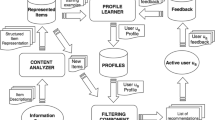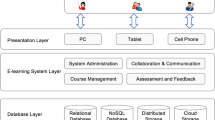Abstract
The utilization of ontologies in knowledge management has become very well accepted in many approaches for instance database, semantics, agent, natural language processing, etc. Artificial intelligent researchers have originally applied the word “ontology” from Philosophy fields which means “being existence”, then the word spread in many scientific domain and ontologies are now used in several developments. The purpose of this research is to present the simple methodologies and methods used to build/adapt/integrate ontologies from the system requirement or by reusing and re-engineering other ontologies; also a process of merging approach will be addressed. The normal ontology engineering will not be suitable for non-expert user; and there are some tools for helping the user to accomplish the ontology engineering task, however, it is not that simple. This paper mentioned the observation and figure out the practical methodology for non-expert user to learn and create simple ontology with little background of them. This paper mentioned the ontology and ontology engineering revisits. Also the main section in this paper mentioned the scenario walkthrough about reality of how non-expert user creates the simple ontology by using suggested and existing methodologies. The last section is recommendation and suggestion from the research experimental which explain the proper ontology developing methodology for non-expert user.


























Similar content being viewed by others
References
Guarino N (1997) Understanding, Building and Using Ontologies. A Commentary to ‘Using Explicit Ontologies in KBS Development’, by van Heijst, Schreiber, and Wielinga. Int J Hum Comput Stud 46:293–310
Uschold M. & Gruninger M (1996) Ontologies: Principles, methods and applications. Knowledge Engineering Review, Vol. 11:2, 93–136. Also available as AIAITR-191 from AIAI, the University of Edinburgh. In [8]
Obitko M (2006) Body of Knowledge, http://www.obitko.com/tutorials/ontologies-semantic-web/body-of-knowledge.html
Noy NF & McGuinness DL (2012) Ontology Development 101: A Guide to Creating Your First Ontology, http://protege.stanford.edu/publications/ontology_development/ontology101-noy-mcguinness.html
Cardoso J s(2007) The Semantic Web Vision: Where are We? IEEE Intelligent Systems
Soares A & Fonseca F (2009) Building Ontologies for Information Systems: What we have, what we need, http://ischools.org/images/iConferences/Soares_Fonseca_iConference09.pdf
Keeney J, Lewis D, Wade V (2010) Towards the use of Policy Decomposition for Composite Service Management by Non-expert End-users, Sch. of Comput. Sci. & Stat., Trinity Coll. Dublin, Dublin, Ireland. P. 163–164
Wyeld TG and Colomb R (2006) “Using the Amazon Metric to Construct an Image Database based on what people do, not what they say”, in proc. of Information Visualisation 2006, London, England Jul05 -07
Wyeld TG (2007) A Non-Expert Organised Visual Database: a Case Study in Using the Amazon Metric to Search Images Media, H&SS, The University of Adelaide, Australia Information Visualization, 2007. IV’07. 11th International Conference. p. 431–435
Chang SF, Sikora T, Puri A (2001) Overview of the MPEG-7 Standard. IEEE Trans Csirc Syst Video Technol 11(6):688–695
Dublin Core Metadata Initiative (1999) Dublin Core Metadata Element Set, Version 1.1: Reference Description. DCMI Recommendation, 2 July. http://dublincore.org/documents/dces/.
Wexelblat A (1992) “Giving Meaning to Place: Semantic Spaces”, in (ed.) Benedict, M., Cyberspace: First Steps, MIT Press, Cambridge, MA.
Graells-Garrido E (2014) Enhancing Web activities with Information Visualization. WWW Companion ’14 Proceedings of the companion publication of the 23rd international conference on World wide web companion Pages 39–44
Denaux R, Cohn AG, Dimitrova V, and Hart G (2010) Multi-Perspective Ontology Engineering. Invited Talk at Department of Computer Science, University of Leeds, Sheffield, 2010
Nicola AD, Missikoff M, Navigli R (2009) “A Software Engineering Approach to Ontology Building”. Information Systems, 34(2), Elsevier, 2009, pp. 258–275.
Bergman MK (2010) A Brief Survey of Ontology Development Methodologies, http://www.mkbergman.com/906/a-brief-survey-of-ontology-development-methodologies/
Reed SL. and Lenat DB (2002) Mapping Ontologies into Cyc, paper presented at AAAI 2002 Conference Workshop on Ontologies For The Semantic Web, Edmonton, Canada, and July 2002. See http://www.cyc.com/doc/white_papers/mapping-ontologies-into-cyc_v31.pdf. Also, as presented by Doug Foxvog, Ontology Mapping with Cyc, at WMSO, June 14, 2004; see www.wsmo.org/wsml/papers/presentations/Ontology%20Mapping%20at%20Cycorp.ppt. Also, see Matthew E. Taylor, Cynthia Matuszek, Bryan Klimt, and Michael Witbrock, 2007. “Autonomous Classification of Knowledge into an Ontology,” in The 20th International FLAIRS Conference (FLAIRS), Key West, Florida, May 2007. See http://www.cyc.com/doc/white_papers/FLAIRS07-AutoClassificationIntoAnOntology.pdf.
Gruninger M, and Fox MS (1994) “The Design and Evaluation of Ontologies for Enterprise Engineering”, Workshop on Implemented Ontologies, European Conference on Artificial Intelligence 1994, Amsterdam, NL. See http://stl.mie.utoronto.ca/publications/gruninger-onto-ecai94.pdf.
KBSI (1994) “The IDEF5 Ontology Description Capture Method Overview”, Knowledge Based Systems, Inc. (KBSI) Report, Texas. The report describes the stages of: 1) organizing and scoping; 2) data collection; 3) data analysis; 4) initial ontology development; and 5) ontology refinement and validation.
Gangemi A, Steve G, and Giacomelli F (1996) “ONIONS: An Ontological Methodology for Taxonomic Knowledge Integration”, ECAI-96 Workshop on Ontological Engineering, Budapest, August 13th. See http://citeseerx.ist.psu.edu/viewdoc/download?doi=10.1.1.22.3972&rep=rep1&type=pdf
The COINS approach was developed by Madnick et al. over the past two decades or so at the MIT Sloan School of Management. See further http://web.mit.edu/smadnick/www/wp/CISL-Sloan%20WP%20spreadsheet.htm for a listing of papers from this program; some are use cases, and some are architecture-related. For the most detailed treatment, see Aykut Firat, 2003. Information Integration Using Contextual Knowledge and Ontology Merging, Ph.D. Thesis for the Sloan School of Management, MIT, 151 pp. See http://www.mit.edu/%7Ebgrosof/paps/phd-thesis-aykut-firat.pdf.
Fernandez M, Gomez-Perez A, and Juristo N (1997) “METHONTOLOGY: From Ontological Art Towards Ontological Engineering”, AAAI-97 Spring Symposium on Ontological Engineering, Stanford University, March 24-26th, 1997
Sure Y, Tempich C and Vrandecic D (2006) “Ontology Engineering Methodologies,” in Semantic Web Technologies: Trends and Research in Ontology-based Systems, pp. 171–187, Wiley.
Ensan F and Du W (2007) Towards Domain-Centric Ontology Development and Maintenance Frameworks; see http://citeseerx.ist.psu.edu/viewdoc/download?doi=10.1.1.93.8915&rep=rep1&type=pdf
Maio PD (2011) ‘Just Enough’ Ontology Engineering. WIMS '11 Proceedings of the International Conference on Web Intelligence, Mining and Semantics Article No. 8
Horridge M, Jupp S, Moulton G, Rector A, Stevens R, Wroe C (2007) A Practical Guide To Building OWL Ontologies Using Protege 4 and CO-ODE Tools Edition 1.1, http://owl.cs.manchester.ac.uk/tutorials/protegeowltutorial/resources/ProtegeOWLTutorialP4_v1_1.pdf
Bakaev M & Avdeenko T (2010) Ontology to Support Web Design Activities in E-Commerce Software Development Process, 241–248. In Proc. IASTED ACIT'2010
Brade M, Schneider F, Salmen A, Groh R (2013) OntoSketch: Towards Digital Sketching as a Tool for Creating and Extending Ontologies for Non-Experts. i-Know '13 Proceedings of the 13th International Conference on Knowledge Management and Knowledge Technologies.
Golemati M, Katifori A, Vassilakis C, Lepouras G, and Halatsis C (2012) Creating an Ontology for the User Profile: Method and Applications, http://eolo.cps.unizar.es/docencia/MasterUPV/Articulos/Creating%20an%20Ontology%20for%20the%20User%20Profile%20Method%20and%20Applications.pdf
Mendis V (2007) RDF User Profiles – Bringing Semantic Web Capabilities to Next Generation Networks and Services, Proceedings ICIN 2007, http://www.icin.biz/files/programmes/Session7A-1.pdf
Brickley D and Miller L (2007) “Foaf vocabulary specification 0.91”, http://xmlns.com/foaf/spec/20071002.html
Siricharoen WV (2010) Enhancing Semantic Web and Ontologies for E-tourism. Int J Inte Inf Database Syst(IJIIDS) 4(4):355–372
Acknowledgments
Thanks to the University of the Thai Chamber of Commerce (UTCC) which gives continually funding of my research for many years and support in every request for all expenses needed to complete research paper. I also would like to express my sincere thanks to all the Computer Science Department staffs and School of Science and Technology colleagues at UTCC who have encouraged me all the way through.
Author information
Authors and Affiliations
Corresponding author
Rights and permissions
About this article
Cite this article
Siricharoen, W.V. Social Networking Ontology Engineering Walkthrough: Practical Approach for Non-Expert User Learning. Mobile Netw Appl 21, 18–34 (2016). https://doi.org/10.1007/s11036-014-0559-y
Published:
Issue Date:
DOI: https://doi.org/10.1007/s11036-014-0559-y




